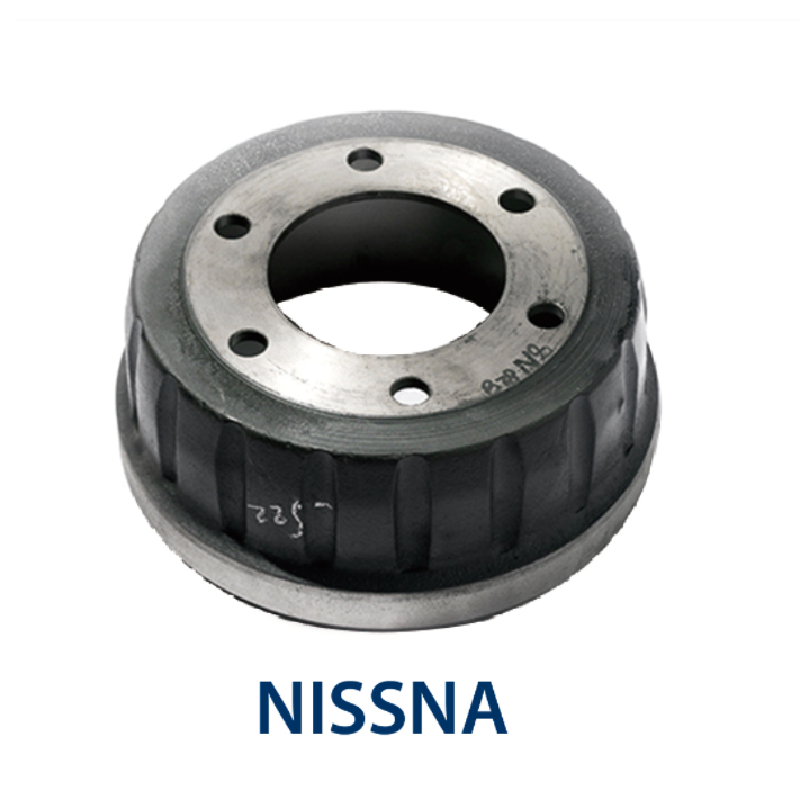Sep . 15, 2024 08:26 Back to list
Rear Brake Drums - Essential Components for Vehicle Safety and Performance
Understanding Rear Brake Drums Importance, Function, and Maintenance
Rear brake drums play a crucial role in the overall braking system of vehicles, especially those utilizing drum brakes. Despite the rise of disc brakes in modern vehicles, rear brake drums remain prevalent, particularly in trucks and some older car models. Understanding their function, importance, and maintenance can help ensure optimal vehicle performance and safety.
What Are Rear Brake Drums?
A rear brake drum is a cylindrical component that houses the brake shoes, which are responsible for creating friction to slow down or stop a vehicle. When the driver presses the brake pedal, hydraulic fluid is sent to the brake assembly, causing the brake shoes to expand against the interior surface of the drum. This friction then slows down the rotation of the wheel, ultimately bringing the vehicle to a halt.
Importance of Rear Brake Drums
The effectiveness of rear brake drums is critical for several reasons
1. Safety Brake drums are integral for vehicle safety. Properly functioning rear brakes help ensure reliable stopping power, particularly in emergency situations. Worn or malfunctioning brake drums can lead to decreased braking efficiency and increased stopping distances.
2. Load Distribution In many vehicles, especially those carrying heavy loads, rear brakes play a significant role in load distribution and stability. A well-functioning braking system helps manage the weight of the load, allowing for better control and handling.
3. Cost-Effectiveness Drum brakes are generally less expensive to manufacture and maintain than their disc counterparts. This can make them a desirable choice for budget-conscious consumers or for vehicles that do not require high-performance braking systems.
rear brake drums

Maintenance of Rear Brake Drums
Regular maintenance of rear brake drums is essential for ensuring their longevity and performance. Here are some key maintenance tips
1. Inspection Regularly inspect the brake drums for signs of wear, such as scoring or cracking. A visual check can help catch issues early before they escalate into more serious problems.
2. Shoe Replacement Brake shoes wear out over time and should be replaced when they get too thin, typically when there’s around 1/8 inch of friction material left. Failing to replace worn shoes can damage the drum itself.
3. Adjustments Many drum brake systems require periodic adjustment to maintain optimal performance. Ensure that the brake shoes are properly aligned and adjusted to maximize contact with the drum.
4. Cleaning Dust and debris can accumulate inside the drum, affecting brake performance. Regular cleaning can prevent buildup that leads to reduced effectiveness and safety.
5. Professional Servicing Given the complexity of braking systems, it’s advisable to have a qualified mechanic conduct periodic checks and servicing. They can assess the brake system as a whole, including pads, drums, and hydraulic components.
Conclusion
Rear brake drums are an essential part of many vehicles, providing reliable and effective braking functionality. Understanding their role, importance, and maintenance needs can significantly impact vehicle safety and performance. By keeping an eye on the condition of rear brake drums and ensuring they are well-maintained, drivers can enhance their vehicle's reliability and safety on the road. Regular servicing and attention to detail can go a long way in preventing costly repairs and keeping drivers and passengers secure during their journeys.
-
Scania Brake Drums: OEM Quality for Optimal Safety & Durability
NewsAug.16,2025
-
R.V.I: Advanced Remote Visual Inspection for Precision
NewsAug.15,2025
-
Discover HYUNDA: Innovative Vehicles, Equipment & Solutions
NewsAug.14,2025
-
R.V.I: Unlock Advanced Insights & Real-time Performance
NewsAug.13,2025
-
Kamaz Brake Drum: Durable & Reliable for Heavy Duty Trucks
NewsAug.12,2025
-
Heavy Duty Iveco Brake Drum - Premium Quality & Safety
NewsAug.11,2025
